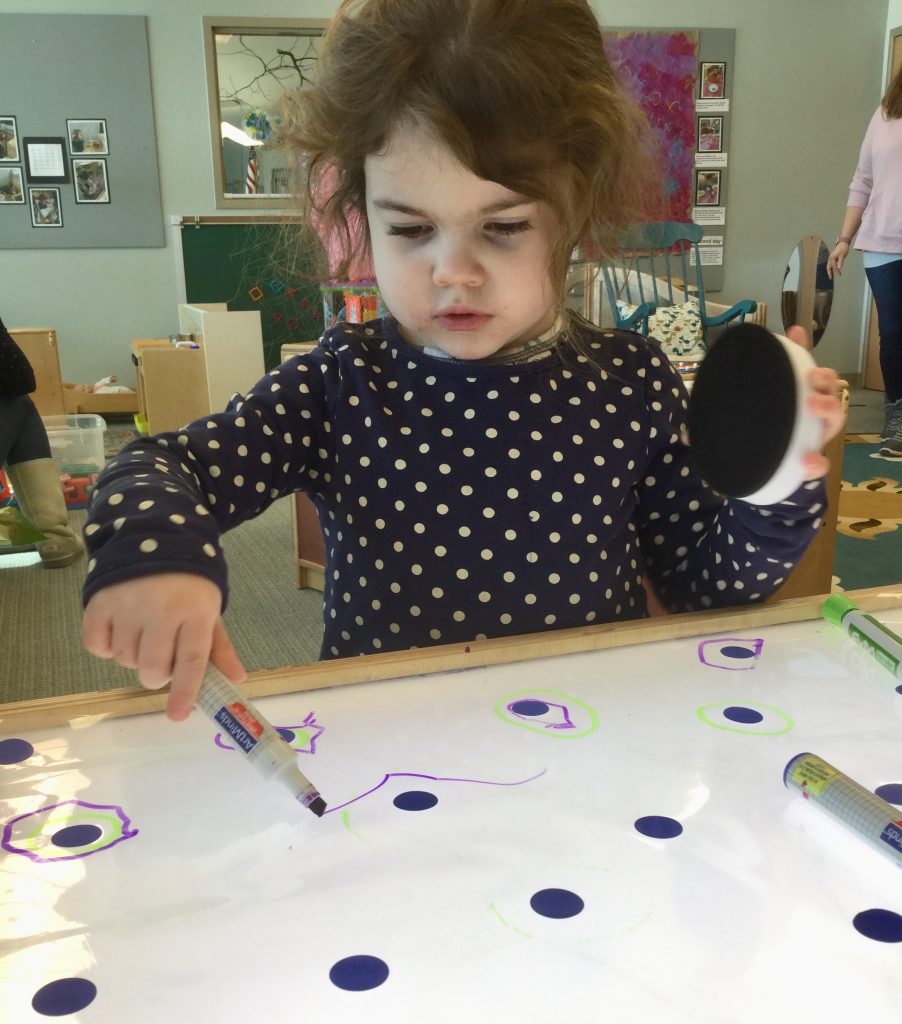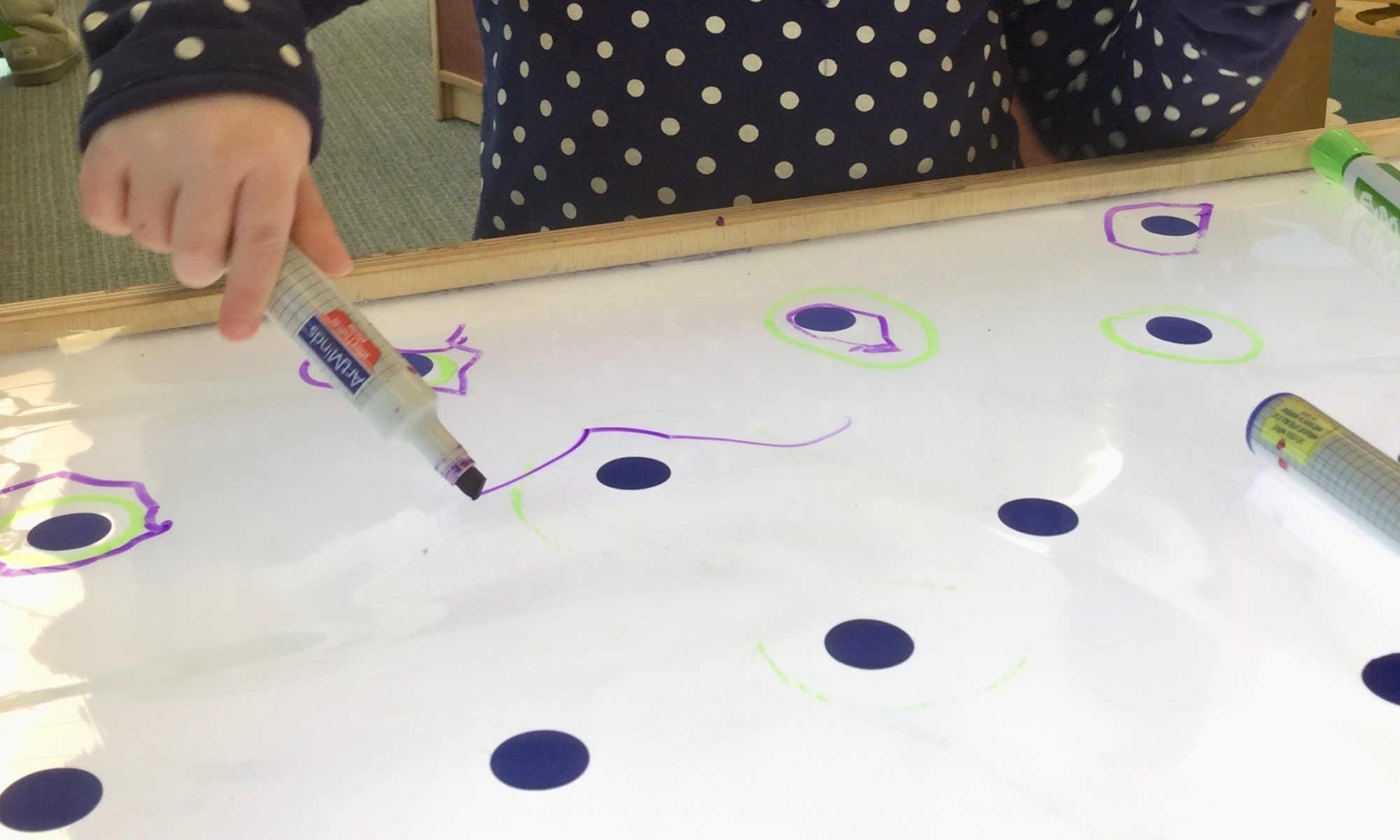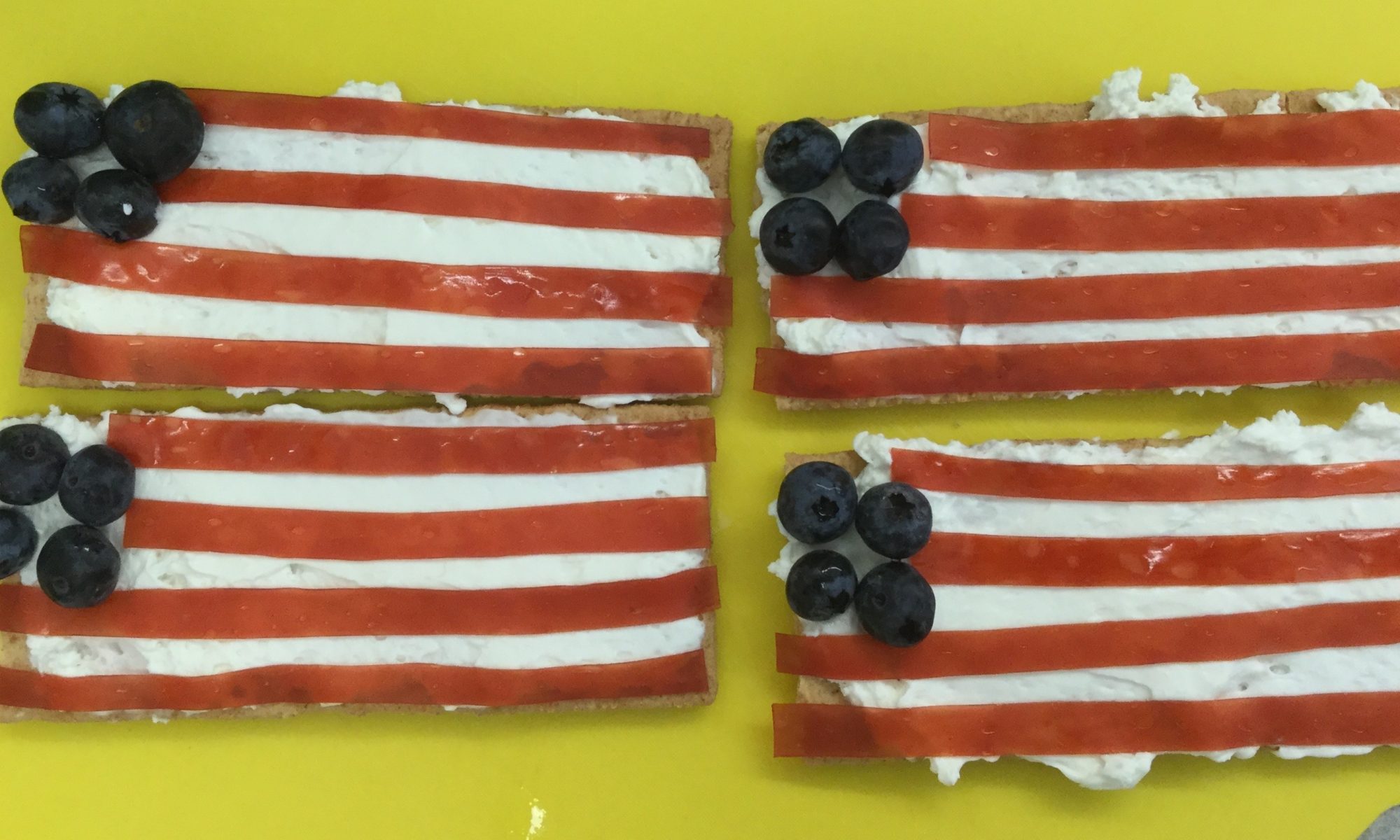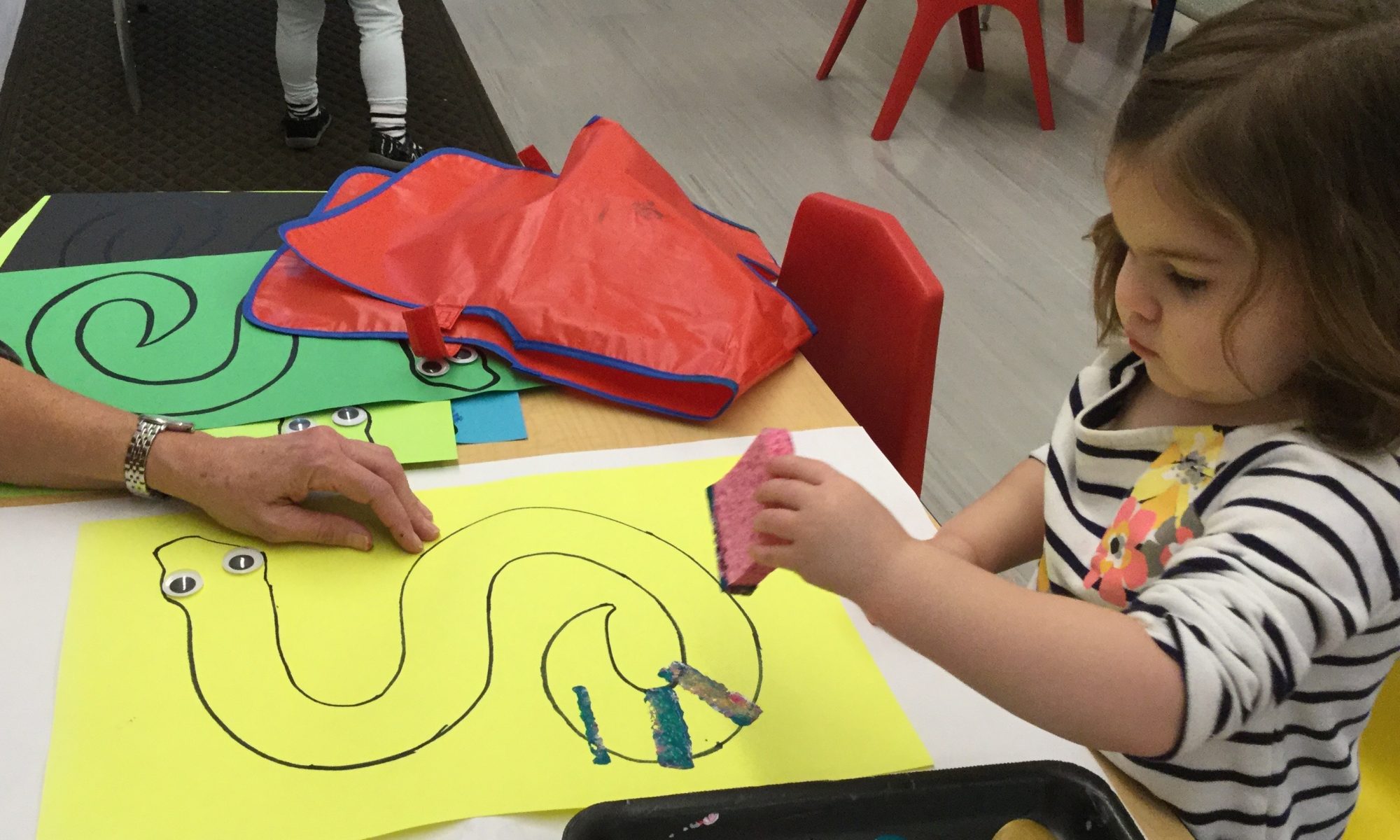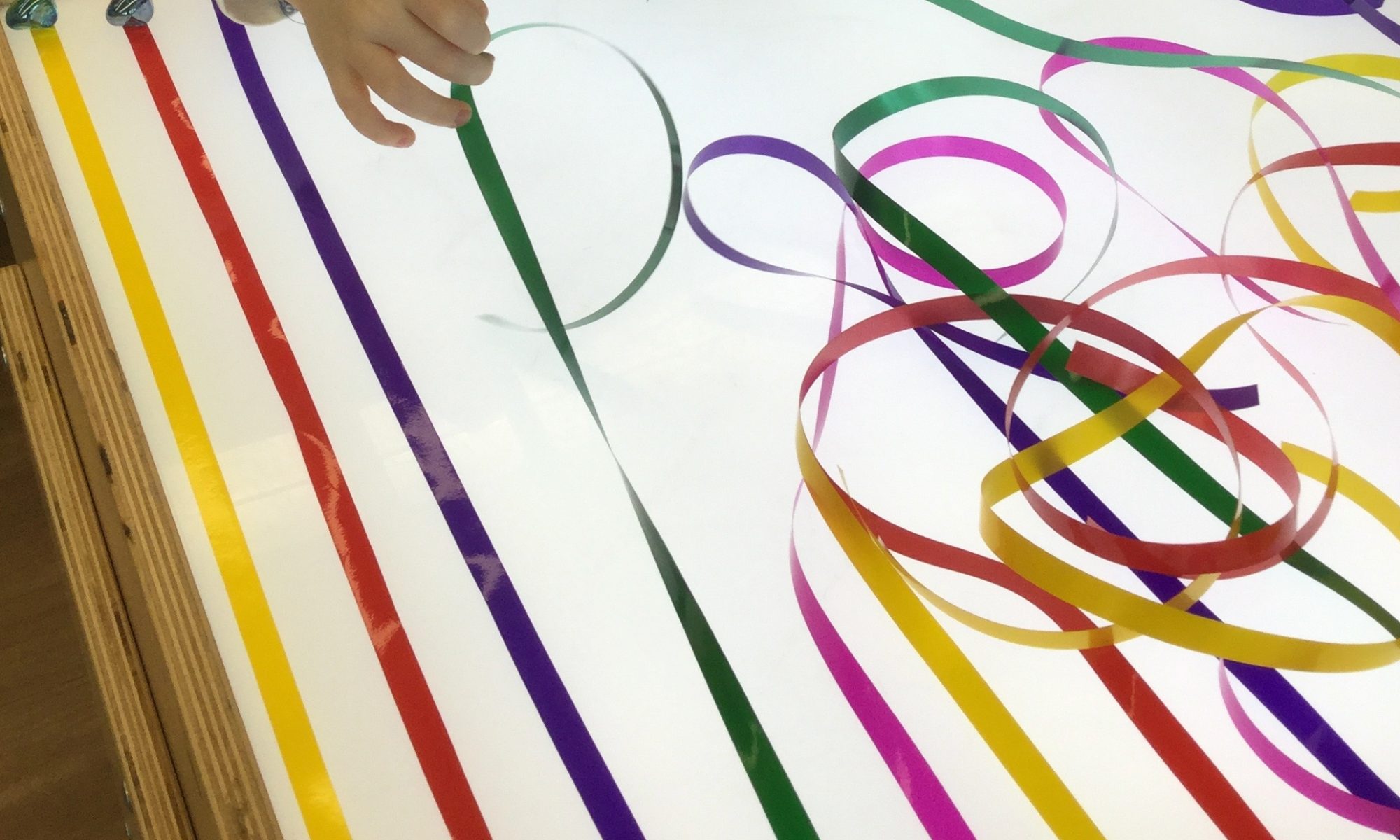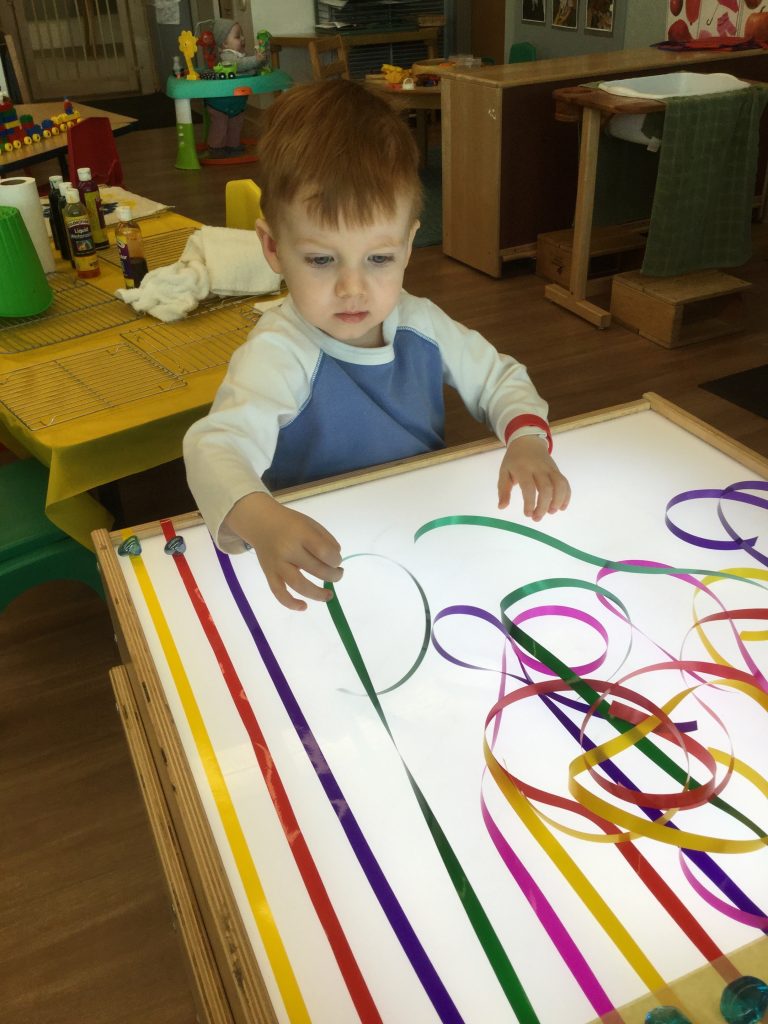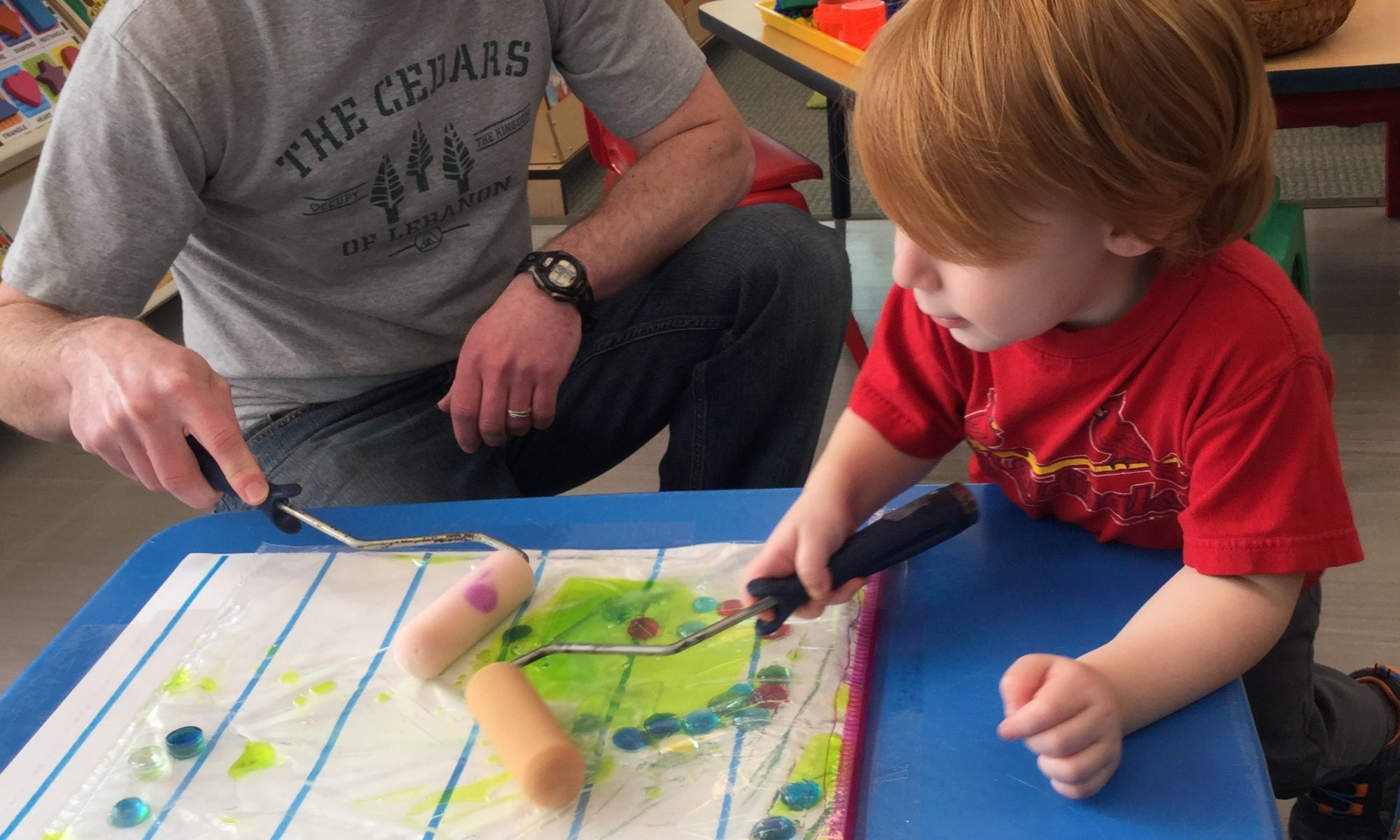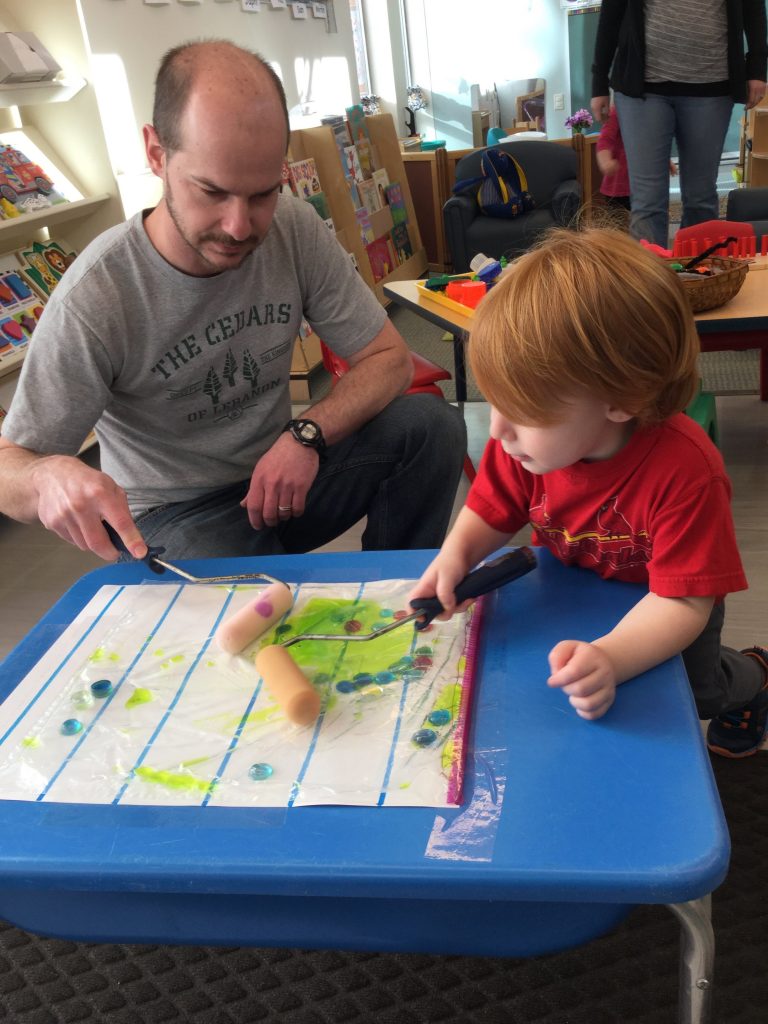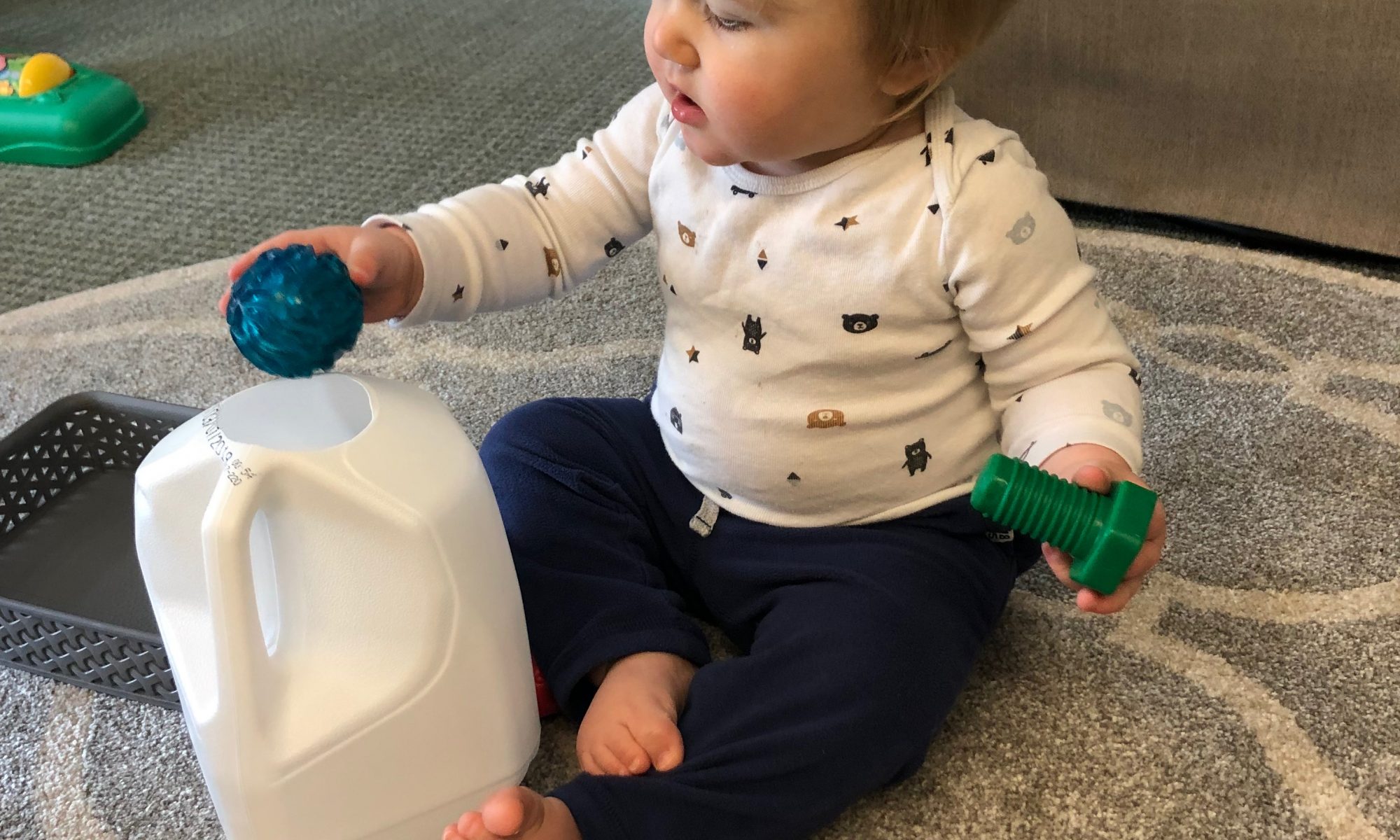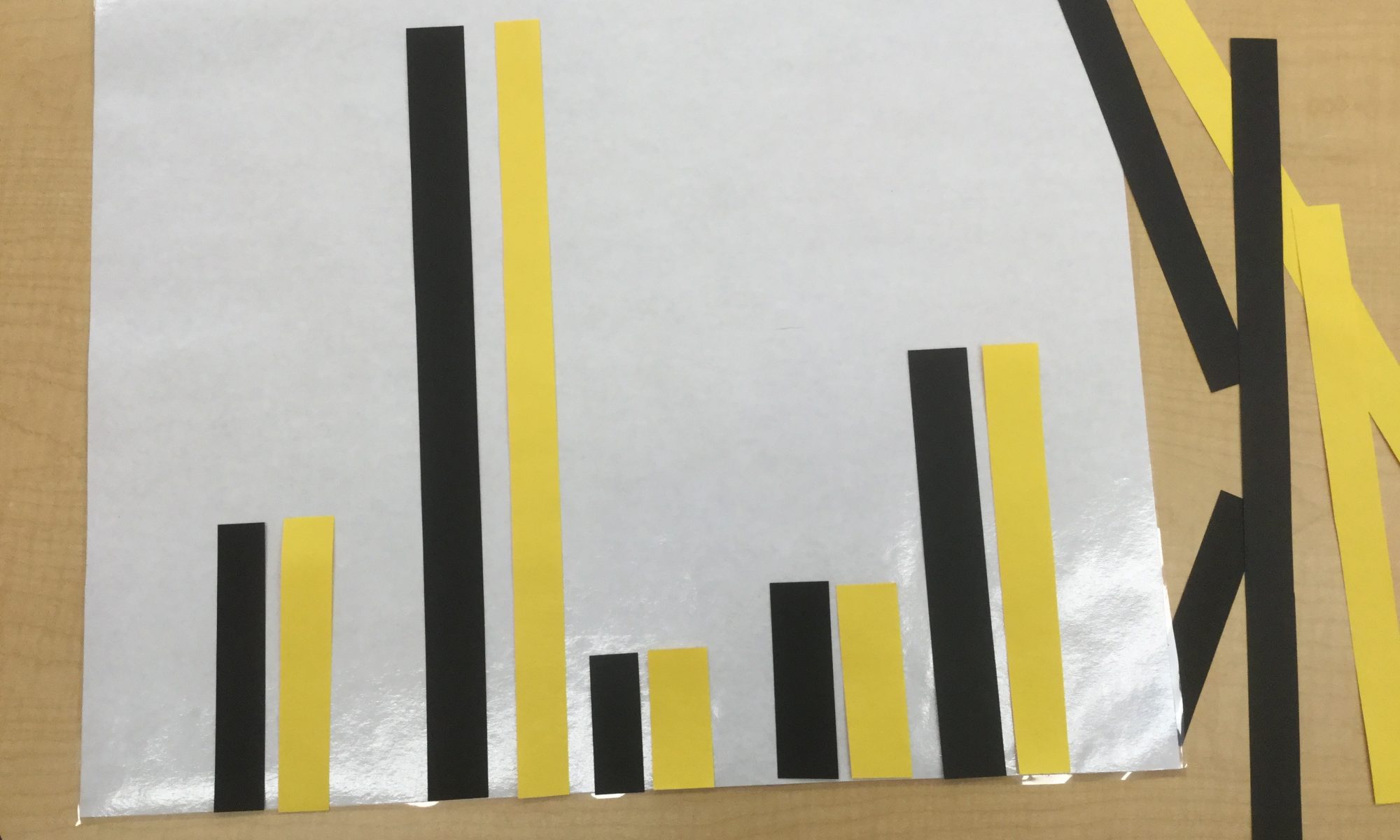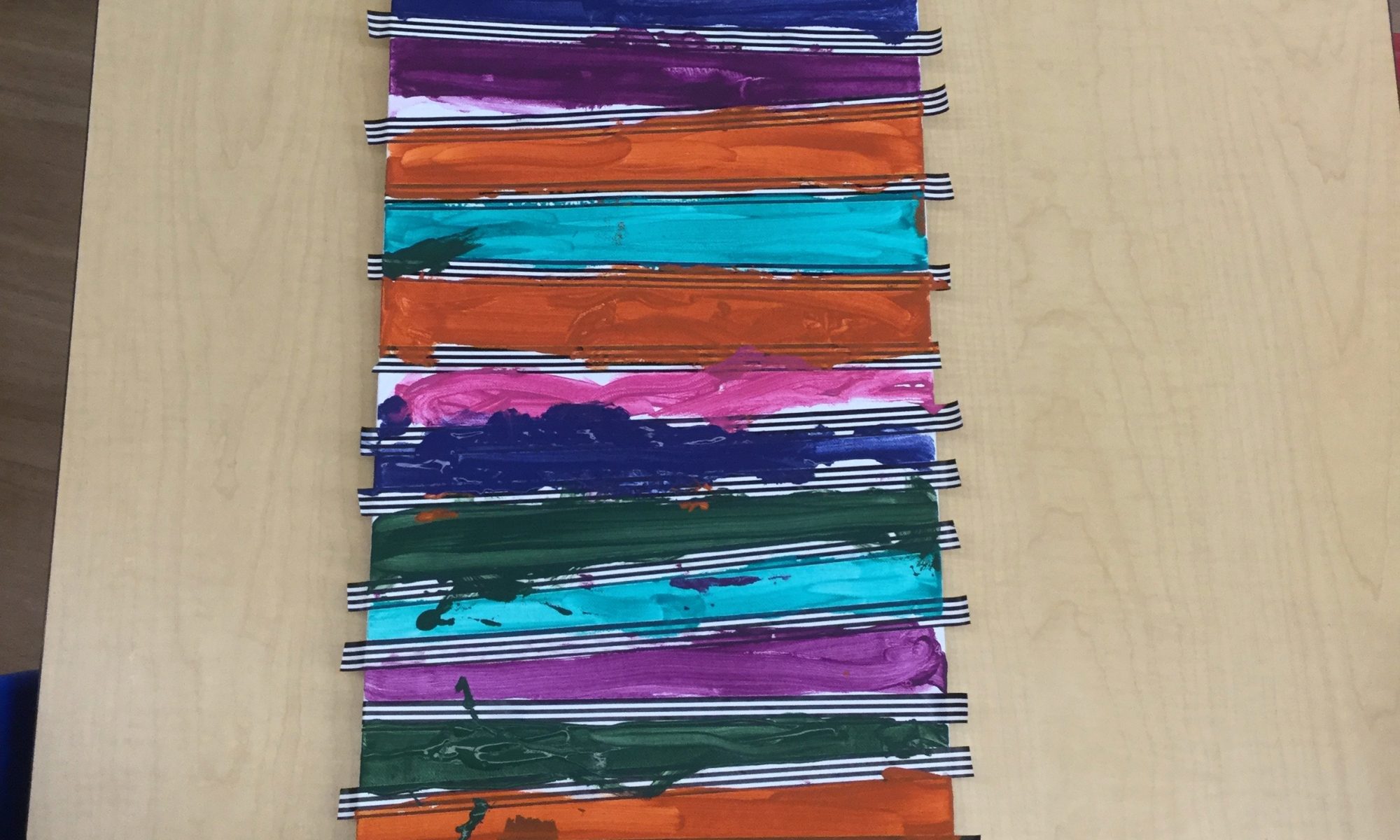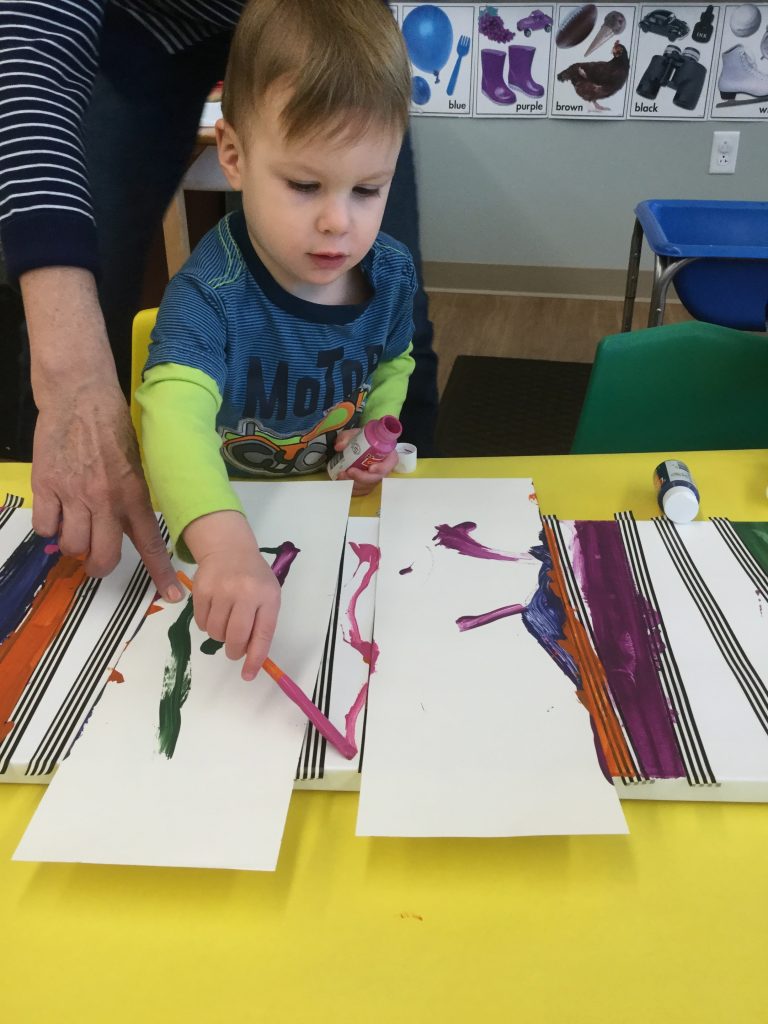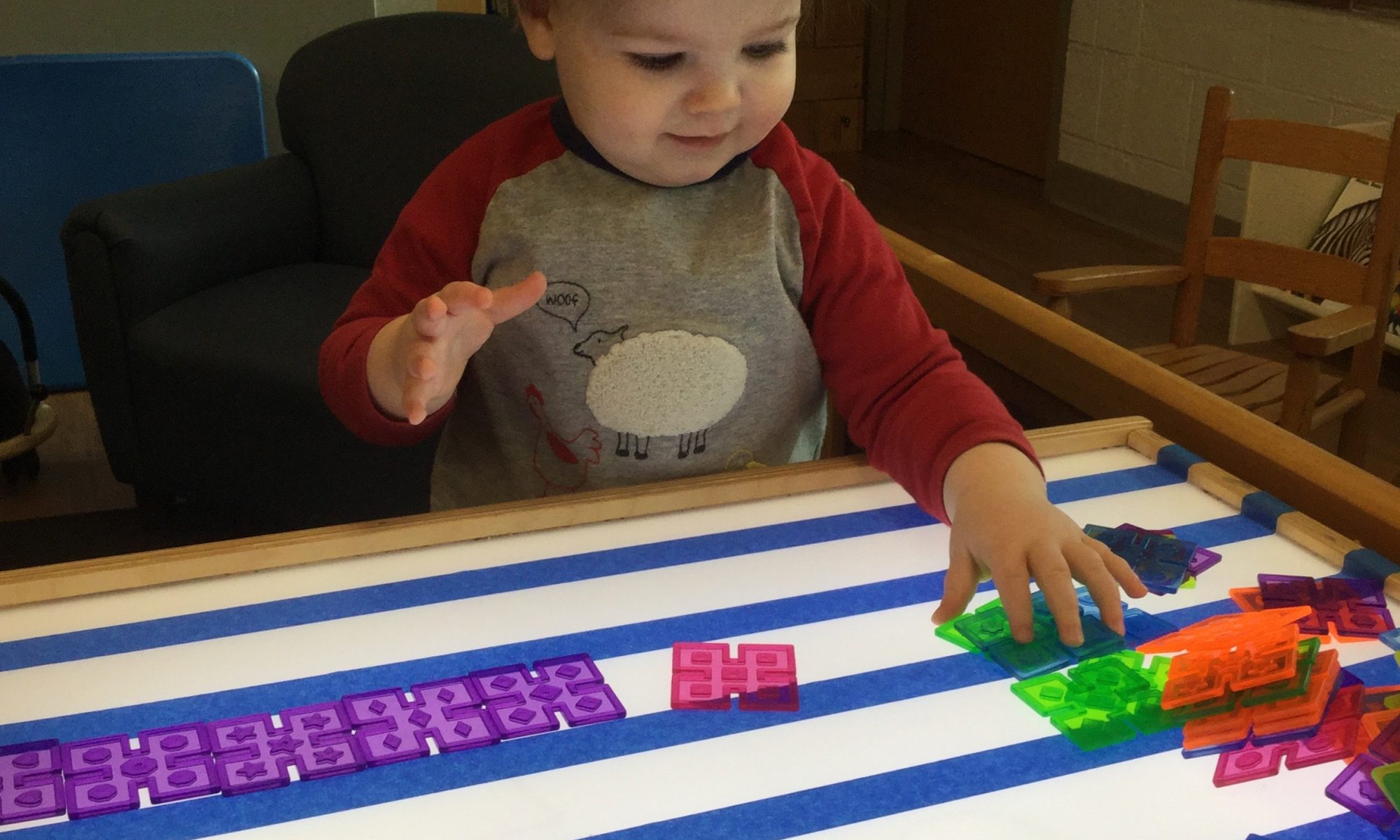Materials:
Large piece of paper to serve as a work mat
Two different colors of 12” x 18” construction paper
Scissors
Directions: Make sure the “work mat” has a straight edge on the bottom. Use scissors or a paper cutter to cut the construction paper into 1” strips. It’s helpful to cut the two sheets of construction paper together so the strips are the same length and width. Once the strips are cut, take two different color strips (for example, 1 black and 1 yellow), lay them on top of each other and cut through both strips, making them identical lengths. Make several more pairs the same way, varying the lengths. If you plan to do this activity with really young children, make the lengths of the strips distinctive. Young children won’t be able to discern slight differences in lengths.
To get started, lay the strip pairs alongside the work mat. Encourage your child to choose a black strip and line it up with the bottom edge of the work mat. Ask your child to find a yellow strip that’s the same size as the black one. Encourage him to lay the second strip along the edge of the mat right next to the first one so he can easily compare the two. There’s a lot of mathematical language you can bring into this activity—terms like, “size,” “length,” “width,” “equal,” “short-shorter-shortest,” “long-longer-longest.” You get the idea!
Once your child has matched the pairs, they may be ordered from shortest pair to longest pair. This might be an activity extension for another day, but if your child is excited about it, press on!
